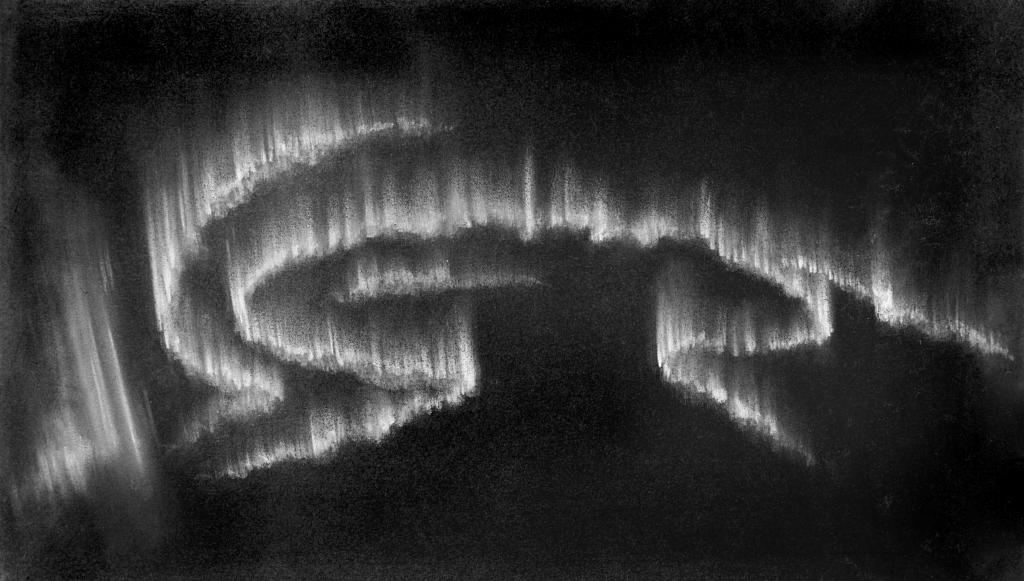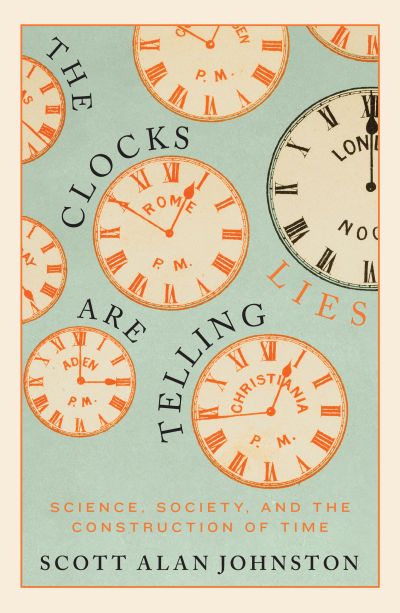For millennia, humans have gazed at the northern lights with wonder, pondering their nature and source. Even today, these once mysterious phenomena still evoke awe, though we understand them a little better now. Still, most of our knowledge about the northern lights has come recently, in the last century or two. Astronomers and meteorologists of the 1800s worked for years to understand the aurora, wondering if they were a feature of Earth’s atmospheric weather, of outer space, or, perhaps, something that straddled the boundary in-between. This centuries-old attempt to understand the northern lights was an immense, international-scale project, and, through fortunate happenstance, it even helped inspire one of the underlying foundations of modern society – time zones.
In the 1870s, the man leading the quest to understand the aurora borealis was Cleveland Abbe. Americans might know Abbe as the father of the National Weather Service, who broadcasted some of the first consistent, reliable, weather reports in the country’s history from his base in Cincinnati, Ohio. But as a meteorologist and astronomer, he was also involved in geophysics research, and a powerful solar storm in April 1874 presented him with a unique opportunity to study the northern lights.

As we know now, auroras are the result of the solar wind interacting with charged particles in the Earth’s magnetosphere. When these particles get bombarded in the upper atmosphere, they shed light energy in spectacular fashion, creating marvelous curtains of green and blue (among other colors). Aurora aficionados will know that solar flares – intense bursts of solar radiation – can dramatically increase the aurora’s vibrancy and color, but also its breadth. Particularly strong solar storms can, on occasion, push the aurora into more southerly latitudes, making them visible across huge swaths of the United States and mid-latitude regions worldwide.
On April 7, 1874, one of these storms caused a particularly memorable display (though it was a moderate storm compared to the famous Carrington event of 1859, at the time still easily within living memory). Abbe jumped at the opportunity to study the aurora, hoping to learn, if possible, its altitude above the Earth, and compare it to concurrent weather phenomena and magnetic observations.
To carry out this task, Abbe needed multiple data points – in other words, he needed observations from multiple sites across the country. Luckily, due to his position as a weather prediction guru, Abbe already maintained a network of contacts across the USA who helped him gather meteorologic data for his weather reports. That night, Abbe put them to work observing the northern lights instead. This team was made up of about 80 public volunteers and 20 expert observers, making this project an early example of a citizen science collaboration (the indirect ancestor, perhaps, of modern citizen science projects like Zooniverse or Seti@home).

The project didn’t all go as planned, however. The problem, Abbe discovered, was that these volunteers, scattered as they were across the country, took their observations using their own local time systems. As a result, comparing the observations to each other in order to draw useful conclusions was frightfully difficult. Abbe wrote in frustration, “The errors of the observers’ clocks and watches and even of the standards of time used by them, are generally not stated…so that the uncertainty of this vitally important matter will be found to throw obscurity upon some interesting features.”
The problem was so pervasive that Abbe decided to take matters into his own hands, working with the American Metrological Society (AMS) to try and devise a permanent solution. He was particularly impressed by a proposal from AMS member and mathematician Benjamin Peirce, who suggested breaking up the country into a series of hour-wide time zones.
A few years later, Abbe received a letter from a Canadian railroad engineer, Sandford Fleming, who was also trying to find a way to standardize time, in his case to keep cross-continental railroads running in sync. Together, Abbe and Fleming (among others) took their idea to Congress, petitioning them to legally establish time zones in the United States. The railways adopted them first, in November 1883. A year later, an international conference held in Washington D.C. established a global prime meridian for timekeeping at Greenwich. Over the next few decades, countries around the world began adopting time zones, in some form or other, based on this meridian.

Today, time zones are ubiquitous. Their origin is often attributed to the railroads, and that’s partially true, but it’s worth remembering that time zones also grew out of the needs of curious people attempting to understand our world and its place in the Universe. Cleveland Abbe and his small group of citizen scientists, who just wanted a better way to keep time while they watched the northern lights dance overhead, literally changed the world we live in. It’s a cheerful thought, and speaks to the power of curiosity and collaboration to make a difference.
By the way, if you’re wondering, scientists – like Abbe – eventually revealed that the northern lights tend to appear between altitudes of about 100-300 kilometers above the Earth: above the Karman line, but low enough for atmospheric interactions to make the colorful light-shows possible.
Learn More:
The northern lights weren’t the only astronomical phenomena to influence human timekeeping. The transit of Venus across the Sun in 1874, and again in 1882, similarly had astronomers across the globe scrambling for a way to synchronize their clocks, lest their observations be useless in comparison to one another (astronomers were attempting to use the transit of Venus to determine the Astronomical Unit – the distance between the Earth and Sun – and that was only possible by comparing transit data from multiple observation points).
These astronomical undertakings eventually brought the issue of global timekeeping to the attention of the general public. Despite sometimes seeming aloof, science and scientific research had – and still have – a strong influence on culture and society.
You can learn more about this story and others like it in “The Clocks are Telling Lies: Science Society and the Construction of Time,” a scholarly history of global timekeeping recently released by McGill-Queen’s University Press. Scott Alan Johnston, 2022.
Additional Reading:
Ian Bartky, “The Adoption of Standard Time,” Technology and Culture (1989).



